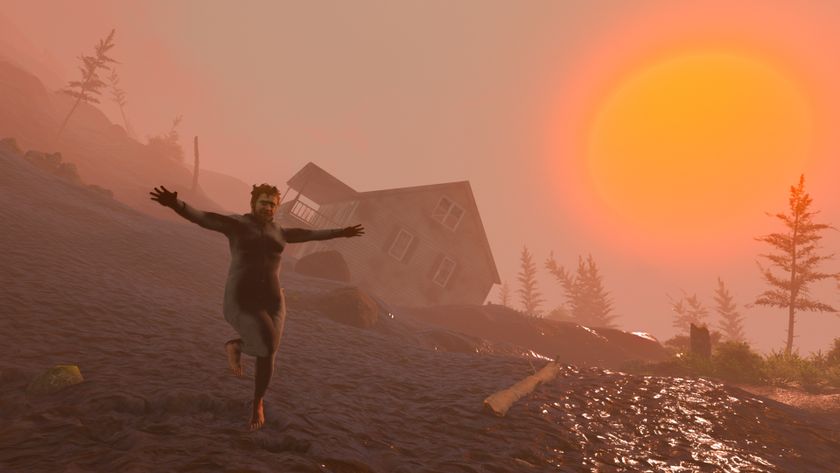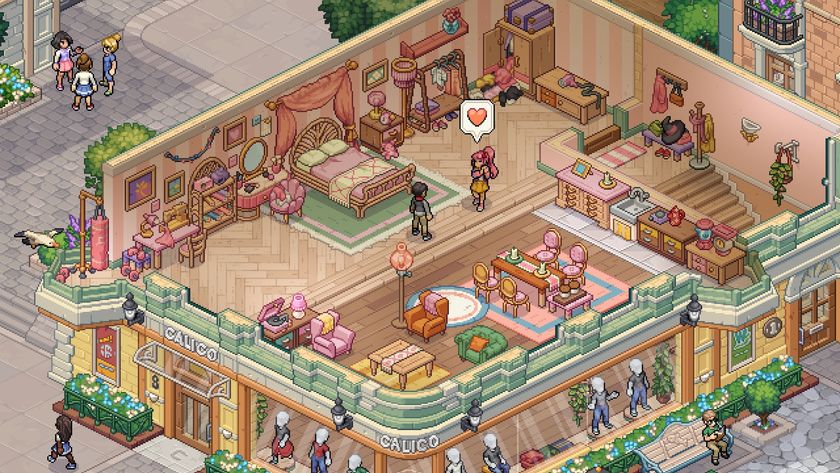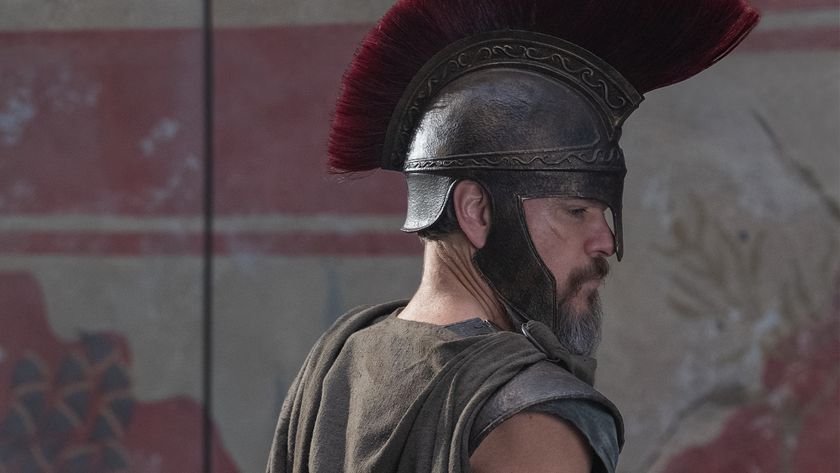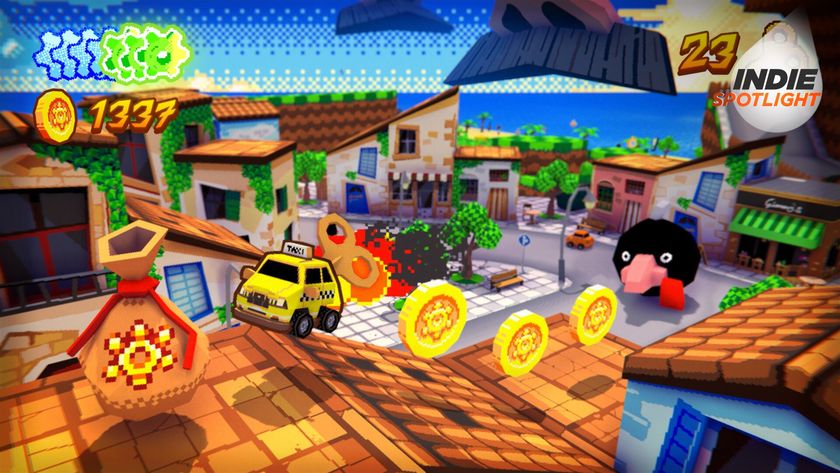In preparation for Jusant, the Life Is Strange developer went on real-life climbing excursions to learn "the choreography on the rocks"
Gamescom 2023 | Jusant is a mediative, mysterious climbing adventure that's designed to be taken at your own pace
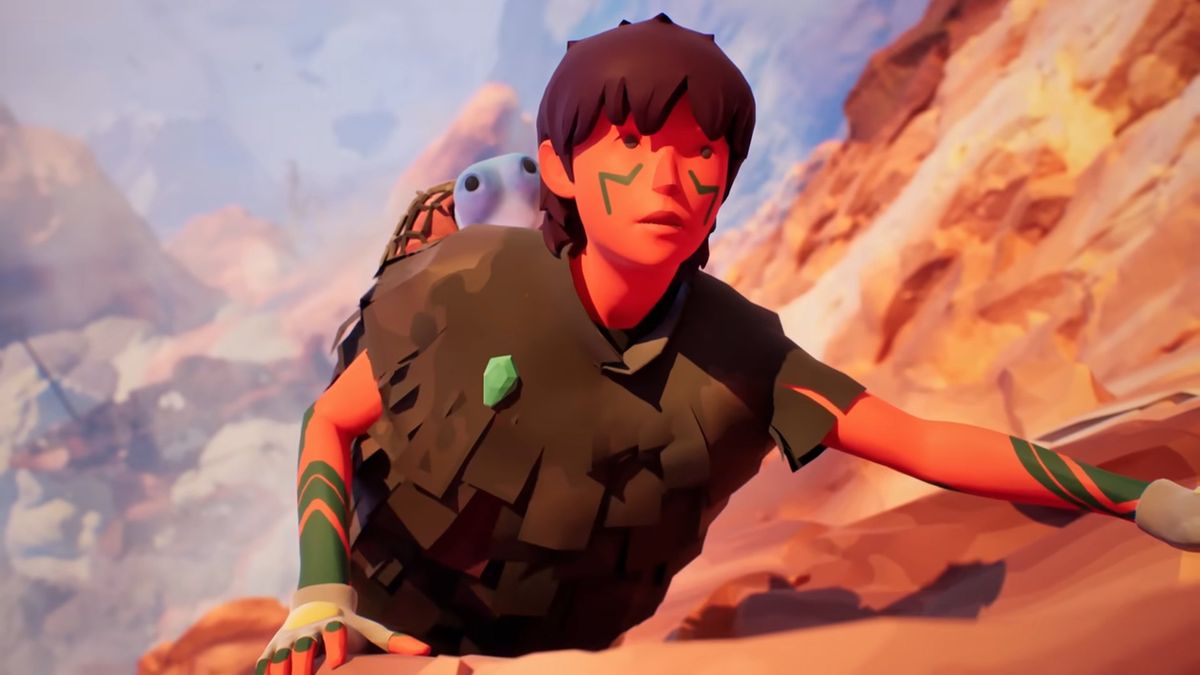
In Jusant, a ledge is just out of my reach. I've been clambering up a steep incline using my trusty safety rope with a carabiner that hooks onto surfaces. After trying to hop over to the platform, I fall just a bit short, but the rope thankfully keeps me from dropping too far. If my own jumping power won't quite help me cross the distance, I'll need to experiment. Using the rope to run to and fro across the wall itself, I gain enough momentum to leap far enough to latch on, Tomb Raider-style.
Then, alternating between each arm to reach across the wall's surface, I continue to climb higher up the giant tower that serves as the central setting of Jusant. I feel myself fall into a meditative flow as I do, and it rarely leaves me as I continue to progress through the early opening sections, which are made up of two different biomes of the tower. The upcoming adventure from Life Is Strange developer Don't Nod isn't trying to be a realistic climbing simulator, but the mechanics and puzzle elements of working out how to reach new heights work in tandem to make it feel both natural and rewarding.
"We learned directly from our own experience, because we did some climbing at the beginning of the production," co-creative director Mathieu Beaudelin says about the approach to the climbing mechanics. "When you see a climber, you can see the choreography on the rocks. We wanted you to have the same feeling. And also, we wanted to let the player have control and for it to be a rather responsive approach during the game with the controller and the character."
"We did a lot of research on how you climb, how you move the body," co-creative director Kevin Poupard adds. "And since this would be the core mechanic of our game, we wanted to give the character a very specific characterization of the body movement."
New heights
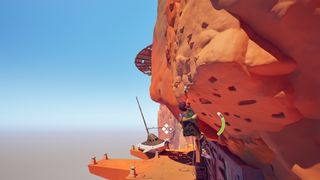

12DOVE was in Cologne, Germany to play the most anticipated new games of 2023 and beyond. For more hands-on previews, interviews, news, and features, be sure to visit the Gamescom 2023 coverage hub for all of our exclusive access and reporting.
Climbing in games is nothing new, but Jusant's take on it feels a little more intuitive and novel than most I've come across – which is no doubt a reflection of the team's research. Playing on the Xbox Series S, climbing has you alternate between the LT and RT triggers, which correspond to your left and right arm. Holding down each trigger will attach your arms to a grippable surface, and let go of one when you want to move a specific arm to another latch or hold with the LS analogue stick. It takes a spell to get used to, but once I get into the swing of things, it starts to feel quite natural.
The opening moments of Jusant draw me right into its mysterious world. I watch as the character I'm about to control walks across a beachfront. Deserted ships, rusted anchors, and debris litter the landscape, and the only signs of life are the seagulls that soar across the skies, and a small crab that skitters over the sands. A giant towering cliff can be seen on the horizon that just so happens to be where I'm heading, and so begins the first leg of my climb.
Each new section of the tower I reach begins to paint a bigger picture of the former inhabitants of this mysterious, deserted tower, with remnants and collectible traces left behind that steadily build up the lore of Don't Nod's unique universe. Throughout my time in the opening section of the game, I'm keen to discover more. As Poupard and Beaudelin tell me, the verticality of the tower presented the team with an interesting challenge when it came to both the storytelling and design of Jusant.
Sign up to the 12DOVE Newsletter
Weekly digests, tales from the communities you love, and more
"Since we wanted to talk about ecology, and reconnecting with nature, we actually went for this vertical world," Poupard says. "And we found it interesting to have this change of mindset that we all live horizontally, and we were like, okay, so if we create a world where it is actually normal, and that people will just go up and down as we move forward or backwards, how will we create a life that will be designed and ruled by these specific rules? And from there we kind of thought over, so what kind of relation will people from the tower have with the water? Where was the water? And what is the cycle of nature? And so this is how we started to create the lore."
"We were excited about the fact that everything is vertical," Beaudelin adds. "It was a real challenge to just have the mindset of doing all level design vertically."
Safety net
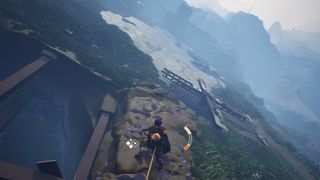
"We wanted to just let the players discover at their own pace, quietly and calmly enjoying the vista that we created, and have the time to look around, because it's all about observing."
Kevin Poupard, co-creative director
While there is a stamina meter not unlike the ones found in Breath of the Wild or the more recent The Legend of Zelda: Tears of the Kingdom, the inclusion of a rope that can be placed on just about any surface means that you needn't worry about falling to your demise – offering a safety net that encourages you to keep trying, even when you fail to reach your primary destination. During longer climbs, your stamina will steadily drop, and you can take a rest on the incline or wall you're on to recover it. The longer you climb, the less stamina you'll have to recuperate, and it won't completely restore until you successfully pull yourself up onto solid ground again.
As someone who has a fear of heights in real life, I'm actually relieved to discover that you can't actually die or fall down too far thanks to the rope. Instead, the challenge comes from monitoring your stamina, and using your climbing prowess to work out how to reach higher sections of the tower. The decision to omit falling-related deaths is all part of the team's desire to create a calming experience you can take your time with.
"We didn't want to put any more pressure on the players," Poupard says. "And since you are actually in control of practically everything regarding the character, we didn't want to give basic objectives that you can find in other games, like, go there and then find that. We wanted to just let the players discover at their own pace, quietly and calmly enjoying the vista that we created, and have the time to look around, because it's all about observing."
While there's a sense of "loneliness" to the world, as Beaudelin puts it, you won't be entirely alone. Early on, you'll be joined by a small blue companion who was designed to look a little like a bubble. Made of water, this cute creature helps you progress by using its unique echo ability to interact with natural elements. The first time I use this ability, I see how my companion can make plants blossom across a wall, which I can then use to climb across. Happily, I'm also delighted to discover that you can pet them any time you like.
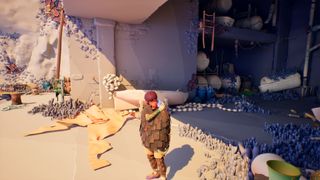
The verticality and mystery of the tower makes for one very engaging setting, with climbing mechanics that are fun and rewarding. Above all, though, I enjoy how meditative it feels and I can't help but be curious about Jusant's inspirations. Beaudelin nods to Ubisoft's vertical climbing adventure Grow Home when it comes to the climbing mechanics.
Poupard, on the other hand, speaks of other adventures with simple mechanics like Journey or Inside, and explains that Death Stranding was actually a source of inspiration when it comes to the puzzle aspect of finding your way:
"What we loved about Death Stranding gameplay is that you are actually analyzing the ground to choose the best paths according to what weight you're carrying. And we want you to have this kind reflex incentive for the players in Jusant."
I only get to check out the early stages of the adventure, but it certainly shows promise, and I'm looking forward to reaching new heights when Jusant releases on October 31, 2023.
Jusant is set to land on PC, Xbox Series X/S, and PS5 on October 31, 2023.

I started out writing for the games section of a student-run website as an undergrad, and continued to write about games in my free time during retail and temp jobs for a number of years. Eventually, I earned an MA in magazine journalism at Cardiff University, and soon after got my first official role in the industry as a content editor for Stuff magazine. After writing about all things tech and games-related, I then did a brief stint as a freelancer before I landed my role as a staff writer here at 12DOVE. Now I get to write features, previews, and reviews, and when I'm not doing that, you can usually find me lost in any one of the Dragon Age or Mass Effect games, tucking into another delightful indie, or drinking far too much tea for my own good.
